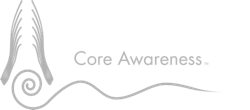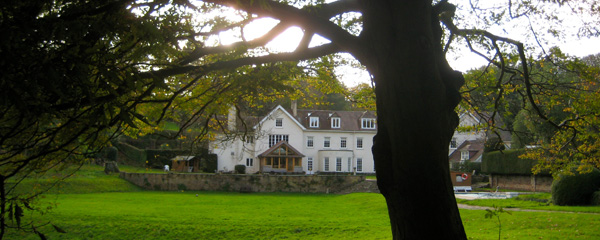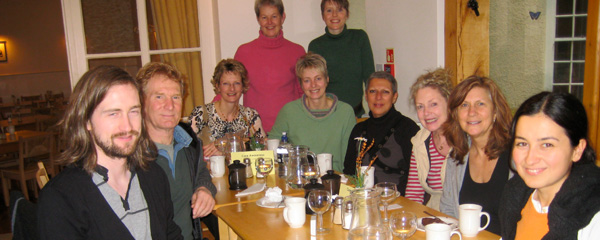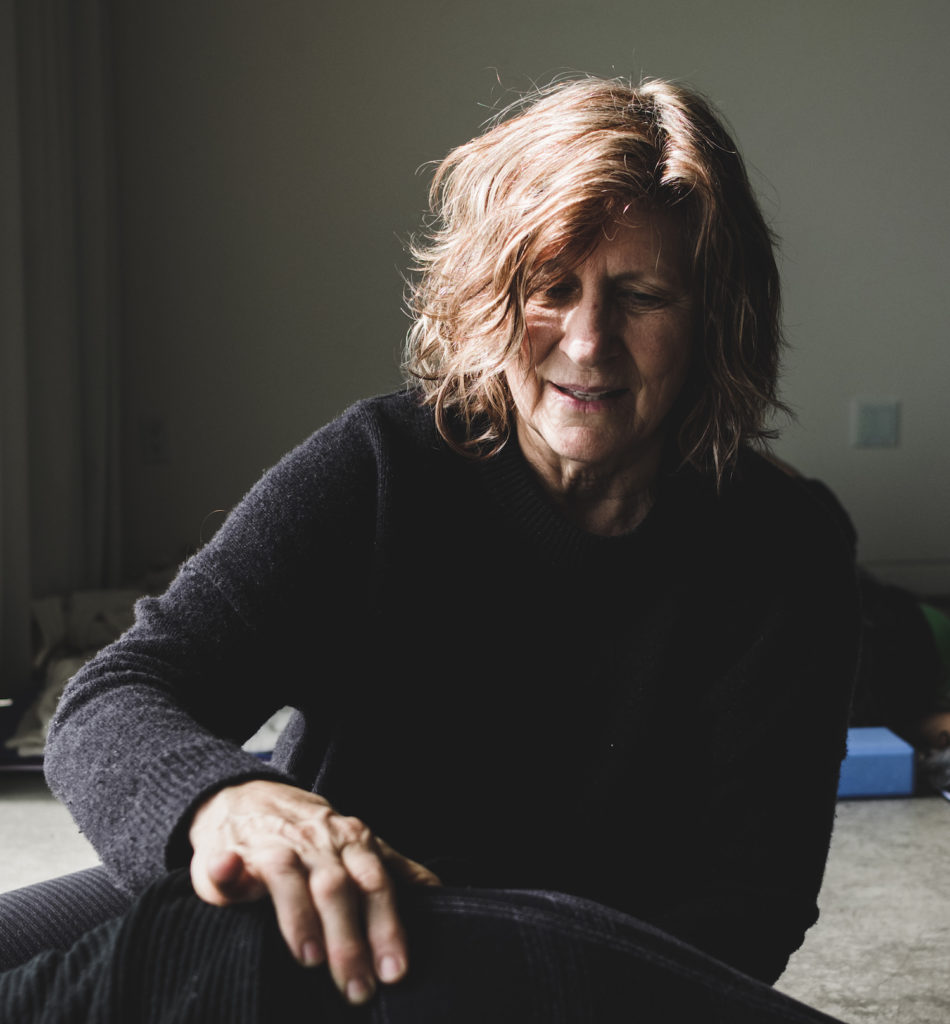I just returned from 10 days in England, where I was received with both a bit of shock and awe, during my historic keynote presentation on Stalking The Wild Psoas. This visually potent keynote will be available for sale in ’09 as a teaching tool for instructors interested in developing a new paradigm for core wholeness.
The Application Course, held at Croydon Hall in beautiful Somerset, was great fun and there will soon be seven new Psoas savvy instructors and/or therapist expanding the global Core Awareness network (Netherlands and Turkey).
You will find them on the Community page. I will be returning next June to this great workshop location!
Here is one participants heart felt description of her experience…
Core Awareness & the Psoas Muscle Application Course with Liz Koch
27th October 2008 to 2nd November 2008
by Christie Tonks
I have just completed a course. A life changing course. A change from within course.
The first part of this course was to be for two days in Winchester, the next part – the application course – was to be at Croydon Hall in Somerset. On the first day at Winchester College, I walked into the large room where for the next two days we were to be introduced to our psoas muscle and core. Music was playing – I now know it to be Jami Sieber’s Second Sight CD and I found it very moving. It set a reflective and quiet mood amongst the group as we gathered.
Liz Koch was our teacher. She started with a demonstration of the Constructive Rest Position (CRP) and body awareness. But then she did something else. She moved, she unwound and she evolved. As an onlooker I felt fascinated. I thought that some people looked uncomfortable watching this person pursuing this intimate exploration of the way her body wanted to unfurl itself. Most of the group were British and as much as I am aware of the dangers of labelling, I think as a culture we have an ingrained history of rigidness. We have a saying – “keep a stiff upper lip”, we also have a habit in times of stress – we make and/or drink tea. Have you ever seen the skin of hide when tannins have been applied; they become stiff and inflexible. Our ‘Britishness’ sometimes has us appear to be rigid inside and out! We don’t do outward pouring of emotions, we don’t show over expressions of grief, love or pleasure. We bottle it up inside and feel ashamed, guilty or embarrassed if some of it seeps out, as if it were disgusting, weak or immoral. So as we watched this person who was so comfortable and found complete pleasure in her movement, there was a ripple of uneasiness. Interestingly at this point rather than watching, as you would usually do when a teacher gives a demonstration, many did what they felt comfortable with – they made tea! The urn gurgled and plastic cups were dislodged from their stack as people tried to hide their discomfort. They needed to watch from the corner of the room, with curious fleeting glances.
We talked about what we wanted to achieve. As I recall I said that I wanted to find out more about some of what I had touched on whilst practicing CRP myself at home and learn how to apply it within my work. On that first day I would never have imagined that I would have experienced and felt what I feel now.
Liz combined practical actions with creative expression. I was taught to sit on my sits bones (ischial tuberosites) and awaken my outward rotators if I wanted to start healing my sacroiliac joint; to get into my skeletal rather than my muscular being so that I could become grounded but light. I learned that gravity shapes us, literally, if it wasn’t for gravity we wouldn’t need bones. When astronauts are in space they lose bone density, they do not need the mass of their bones to attract them to the gravitational pull of the earth because they are beyond where gravitational pull exists. At least I think that is how the gravity concept works – but physics was never my strong subject!
Anatomy is not ignored in the world of Liz Koch, however it is expressed in a different language. Put your text books to one side – NEWS FLASH – just in case you weren’t aware we are a whole moving being. Liz voiced some beautiful analogies, visuals and reminders: think of your diaphragm as a jelly fish, breath from the outside as well as the inside, remember that our bones are filled with fluid. Think soft! Our psoas muscle crosses off some of the check list when it comes to the definition of skeletal muscle but there are other points on the list that just cannot be checked. According to my anatomy book the Iliopsoas muscle is a hip flexor, however, it does not initiate flexion of the hip, it gets out of the way when the hip is flexed by other muscles. It does not cause the leg to swing, it allows it to swing. It supports some nerves and organs which makes it an intelligent messenger of the central neuroendocrine system. It is in our core and bridges us from top to bottom, indeed it is the only muscle that attaches the spine to the legs and as I learned over the next seven days from our inside being to the outside world.
Many other muscles and structures happen and connect with the psoas muscle. Our Latissimus dorsi muscle originates from the same vertebra and then expands upward and outward to the arms. Liz describes them as out bat wings – what a lovely analogy. So when we stretch the skin that is over this muscle we talk to our psoas. The Erector spinae muscle group, when activated allow the Psoas muscle to elongate, so they are good friends. The Iliacus shares a common tendon with the Psoas muscle which then connects with the lesser trochanter of the femur (the inside of our thigh bone), the Iliacus is like an open fan inside the basin of our pelvis when stretched but is so often closed up by the way we sit.
In short all our body structures are relative to our Psoas and the Psoas is relative to all of us. We are a dynamic, whole, moving, breathing, fluid, pulsating, living being, or if we are not all of these things we have the potential to be and then we could be happier, healthier, calmer, rational people. Just think what society would be like if we were all like this?
The constructive rest position is the base for many other explorations. This is the time to soften and explore my core, to become aware of the rest of my body, the sensations within it and that communicate with my environment. How does the floor feel to my feet, sacrum, back and shoulders, what are the smells and light like in the room, how does the music or silence in the room make me feel. This is the opportunity to acknowledge but not judge the sensations running through me, to accept and trust that my nervous system will adjust and realign me at its own pace – whether it takes minutes, days or weeks. This is the opportunity to allow changes to start from within and work their way out. This is a time that I can be calm and rational enough to puzzle through some of my conflicts. At this moment I can be in the present with all the sensations of now and delve into my past to deal with issues that I have buried deep to protect myself but whilst they are buried they keep me rigid. This is the time that I can at anytime come back to the present and indulge in the pure pleasure of now and how my body wishes to unfold, explore and just be. This is the time that I can be aware of my core, be soft on the inside and forgive my self and others, find compassion, love and approval for my self and an ever rigid unforgiving world.
During the next five days at the application course in Somerset my world changed. I moved, I did drawings, I shared and listened, I awoke my reptilian brain, I danced and I experienced an inner smile.
I have continued with my explorations on a daily basis from one to two hours a day and I love it and feel the love of it. I go to bed early and get up early to give my self the time to do this before work. I drink more water now and eat more fruit and vegetables – not through guilt but just because I want to and like how I feel because of all this, and…… I sit on my sits bones!
So, thank you Liz Koch, for introducing me to my psoas and making me aware of my core!



